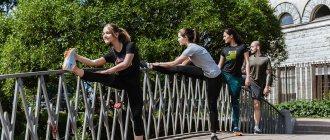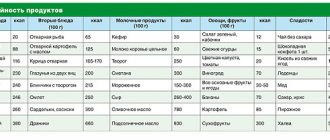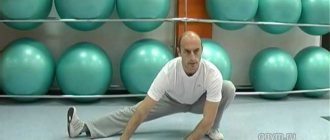Football can now very often be watched on television channels or live in the sports arena. This is a rather difficult sport that requires great endurance and strength. Also, once every 4 years the World Cup takes place, when fan activity increases significantly, and discussions of matches, goals, players and victories of certain teams cause a lot of discussion. How many of us wonder how many kilometers a football player runs during a match ? During the entire game, the participants in the match have to run huge distances for 2 hours.
Competent execution of training
Championship winners know better than anyone how to run 1 km without preparation. They can tell you how to hold your back correctly, move your feet and move your arms. Having achieved a balance of strength, you can stretch not only the specified standard without shortness of breath, but also go longer distances.
There are several main points to increase body endurance:
- It is important to perform the correct movements while running. These include the position of the arms, legs, back, pelvis, and movement of the foot.
- You need to master the method of sports breathing.
- Training is the basis for building correct posture during acceleration.
- The body must receive energy, and therefore choose a balanced diet.
It is recommended not to forget an important part of training - this is the warm-up before running. Warm muscles are more pliable to intense work. If this is not done, the next day you will experience severe pain and stiffness in the body.
Maximum speed
The maximum running speed will vary depending on the discipline in which the athlete is participating. That is, athletes and runners show different speeds at different distances. The longer the marathon and the greater the distance, the lower the maximum speed will be.
Maximum loads very quickly deplete our body's reserves. And if a marathon runner takes off at the very beginning of the race, then he is unlikely to have enough strength to complete the competition.
This is why athletes who can run quite fast run long distances much slower than we might think.
It is more correct to talk about maximum speeds at sprint distances. About medium - on long.
The maximum possible (record) human speed today is 44.7 km/h. It was shown by the record holder for 100 and 200 meters running, Usain Bolt - the fastest man in the world.
Previously, several times during the 20th century, different runners entered the record books, but Bolt pushed them aside. Perhaps this is due to the system for recording results - after all, today is the age of electronic technology.
Bolt's record at a distance of 100 meters is 9.58 seconds, and 200 - 19.19 seconds.
Principles of Endurance
Not everyone understands how to quickly run 1 km without preparation and not get tired. At the start, they begin to quickly accelerate, giving all their best, which leads to shortness of breath and loss of strength. Professional athletes recommend gaining maximum speed at the start, the dash lasts no further than 100 meters, then slowing down.
A quick start makes the task easier for the runner; such a maneuver helps to stay in the flow of the mass race. After all, it is easier to overcome distances when there are few opponents ahead. Overtaking rivals in front occurs smoothly, without sudden acceleration.
Before the finish line, 300 meters away, you can speed up a little. However, you need to pay attention to your remaining strength so as not to fall a few seconds before the end line. How to run 1 km without training? This becomes more clear when you try to test your capabilities against time every day. Morning workouts help you understand what your body is capable of and make timely adjustments before the big day.
Mileage depends on the player's role
Research by professional football statisticians has shown that a player's total mileage per match depends on what role the player belongs to. Let's speculate. Surely, the goalkeeper passes (runs) the least amount of time per game. His movements are mainly limited to the penalty area. Only sometimes does the goalkeeper have to run outside of it (elimination of a dangerous one-on-one situation, passing with defenders, etc.), which increases the mileage of the goalkeeper of a football team. Defenders certainly run more than goalkeepers, but this is natural. The center back is usually a slow, textured footballer, so it’s not worth saying that he moves a lot. Wing defenders run much more than central defenders, because they have to join the attacking actions of their team much more often. Forwards work in approximately the same mode as central defenders. Their main task is to score goals. The defenders send the ball into the attacking line using a long pass, which the attackers must cling to. Next, the forward makes a discount on the players of the second line of attack, that is, the midfielders who join the attack. Of course, the forwards continue to take part in the attack.
The midfield players run the most because they have several difficult tasks:
- organizing the integrity of the command structure;
- linking defensive and attacking formations;
- creating attacks.
Professional approach
How to run 1 km without training? Follow these guidelines:
- Back - make sure it is level.
- Feet - each new step occurs in such a way that the person touches the sole at the level of the center of gravity. Contact with the coating occurs using the rolling method: from heel to toe.
- Legs - the stride span should be maximum. So, they achieve the required acceleration using the laws of physics. At the base, the calf muscles act as springs. If you follow natural movements, you can easily select a running pace at which only horizontal acceleration is applied. The rest of the movements are carried out automatically.
- Hands - it is recommended to place them at an angle of 90 degrees, moving them only at the shoulder joint.
The body is slightly tilted before starting the movement. A person feels how he wants to move forward. After following each point, it is easy for even an inexperienced athlete to understand how to easily run 1 km without preparation.
Benefits of learning movement techniques
The goal of performing the exercises is to develop only the necessary movements, without wasting energy. As a result, it becomes clear how easy it is to run 1 km without preparation. By increasing the efficiency of energy consumption, a person can cover a kilometer without fatigue. The correct approach to movement helps keep tendons and ligaments healthy. And after a sudden load there will be a minimal recovery period.
People who rarely engage in physical activity need to hone their skills. The best athletes use the principles of natural running, where a person does not try to exceed his physical performance. It is enough to approach the issue from the right side, and another test of endurance will not turn into a punishment.
Average human running speed
At mass starts dedicated to sports holidays, up to 10,000 people start simultaneously. At the same time, each person will show his own different result from the rest. The reason for the difference in results is the chosen running pace, in turn, the pace is determined by the fitness of the runner. The more trained a person is, the higher the frequency of steps and the pace of covering the distance.
Due to the difference in preparedness, there are two options for the average speed with which a person covers different distances.
| Distance length | Average speed (km/h) |
| Sprint - 60-400 m. | 36-39 |
| Average distances 800-3000 m. | 18-23 |
| Long distances 3000-42195 m. | 12-23 |
Explanation of the table. The results are shown in speed intervals that are acceptable at different levels of training. The first result indicates the speed for a person who regularly engages in a certain type of running, the second indicator for highly trained athletes.
Breathing technique
To understand how to quickly run 1 km without preparation, it is not enough to follow the listed rules of natural running. Without proper breathing, all efforts will be in vain. Here are the main points of the inhalation/exhalation sequence.
During movement, the mouth and nose work together. Breathing occurs simultaneously through both natural openings. The pace of inhalation and exhalation is intense from the first seconds of movement. It is this approach that helps prevent oxygen deprivation from strength training. It is not recommended to select the frequency of contractions of the lungs; you need to give the body the opportunity to choose it naturally.
Workout
To know how to properly run 1 km without preparation, daily exercises are carried out to develop the following skills:
- Correct foot placement occurs while running barefoot or when training on a scooter.
- Activation of the gluteal muscles is carried out during daily training by running a short distance.
- Developing the correct body position occurs during the exercise: running in place while fixing the waist with a tourniquet. A man tries to stretch a rope tied to a stationary object: a fence, a peg.
- The springing properties of the lower parts of the legs are developed during exercises with a skipping rope.
- The skill of maintaining a balance of strength and a sense of rhythm is acquired by running with a skipping rope. A person gets used to removing his foot from the covering in time and putting it back in place.
No champion would achieve high results without daily training. Only diligence helps you acquire the missing skills in a short time.
How to prepare for a marathon in order to run it in the minimum amount of time?
Training mode
The most important thing is regular training, which should begin at least three months before the competition.
If your goal is to run a marathon in three hours, then you need to run at least five hundred kilometers during training in the last month. It is advisable to train as follows: three days of training, one day of rest.
Vitamins and diet
The following must be consumed as vitamins and microelements:
- WITH,
- IN,
- multivitamins,
- calcium,
- magnesium.
You can also try the popular “protein” diet before the marathon, and a week before the competition, stop eating foods that contain carbohydrates. At the same time, three days before the marathon you need to exclude foods containing proteins and eat foods containing carbohydrates.
Equipment
- The main thing is to choose comfortable and lightweight sneakers, the so-called “marathon” ones.
- Places where friction may occur can be coated with petroleum jelly or baby oil.
- It is better to give preference to high-quality clothing made from synthetic materials.
- If the marathon takes place on a sunny day, a hat will be required, as well as a protective cream with a filter of at least 20-30.
Tips for participating in competitions
- Set a goal and clearly go towards it. For example, determine the time it will take you to cover the distance, as well as the average time.
- There is no need to start quickly - this is one of the common mistakes of all newbies. It is better to distribute your forces evenly.
- Remember: reaching the finish line is a worthy goal for a beginner.
- During the marathon itself, you should definitely drink - either clean water or energy drinks.
- Various fruits will help replenish your strength, such as apples, bananas or citrus fruits, as well as dried fruits and nuts. Energy bars will also come in handy.
Before passing the standard
Having trained, we can conclude: the newly minted athlete knows how to run 1 km without preparation. It is recommended to exclude heavy loads for 5 days before the start of the competition. You can only warm up over short distances up to 200 meters.
A winning mentality is key when preparing for a race. Science has established the fact of activation of internal forces after gaining confidence. The runner will be in better condition if he trains on the track of the future test. This is how you assess your physical capabilities. After this, additional efforts are made in training.
If a person wants to run a kilometer, then he needs to set a goal to overcome 5000 meters. After training, the previous distances do not seem so difficult and it is mentally easier to prepare for a responsible race. However, you should not set the bar too high; unrealistic plans will only lead to disappointment.
Mileage record holders
Below is the information that was overcome by some of the players during the match.
- Andrea Pirlo -12 km
- Henrikh Mkhitaryan 12, 4 km
- Christian Eriksen 13 km
- Lucas Vazquez 12, 9 km
According to FIFA statistics, two players from the Croatian national team ran the most kilometers in all matches played at the 2020 World Cup in Russia: Ivan Perisic - 72.5 km in 632 minutes in 7 matches, and midfielder and national team captain Luka Modric - 72.3 km in 694 minutes in 7 matches.











